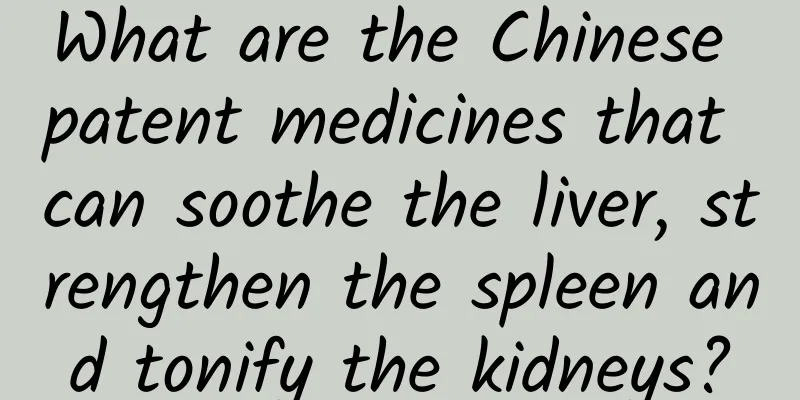What to do if you have moderate mitral stenosis

|
I believe that many people do not know what moderate mitral valve stenosis is, nor do they know its symptoms and causes. This leads to the inability to treat moderate mitral valve stenosis in a timely manner. In fact, moderate mitral stenosis refers to heart diseases such as heart failure and atrial fibrillation. These diseases can seriously affect the function of the heart and can lead to death if not treated in time. Treatment 1. Drug treatment includes preventing recurrence of rheumatic fever, preventing infection and treating complications. (1) Heart failure should follow the general principles of heart failure treatment, including diuresis, cardiotonic and vasodilator treatment. Avoid using vasodilators that mainly dilate arterioles in acute pulmonary edema. (2) The principles of atrial fibrillation treatment are to control the ventricular rate, restore sinus rhythm, and prevent thromboembolism. ① Acute attack with fast ventricular rate: For patients with stable hemodynamics, intravenous injection of digoxin can be used to control the ventricular rate to below 100 beats/minute. If ineffective, intravenous amiodarone, propafenone, beta-blockers (metoprolol, esmolol) or calcium channel blockers (verapamil, diltiazem) can be used; in case of acute attack accompanied by pulmonary edema, shock, angina pectoris or syncope, electric cardioversion should be performed immediately. ② Chronic atrial fibrillation: For patients with a disease duration of less than 1 year, a left atrial diameter of less than 60 mm, and no sick sinus syndrome or high-grade atrioventricular block, medication (common conversion drugs include quinidine and amiodarone) or electrical cardioversion to convert to sinus rhythm may be considered. Ultrasound examination should be performed before cardioversion to exclude intraatrial mural thrombus. After successful cardioversion, amiodarone or quinidine was used to maintain sinus rhythm. For those who are not suitable for cardioversion, oral digoxin or combined use of diltiazem, bisoprolol, and atenolol can control the ventricular rate to about 70 beats/minute at rest. (3) Indications for anticoagulation ①Left atrial thrombus. ②There is a history of embolism. ③Artificial mechanical valve. ④Atrial fibrillation. If there are no contraindications, warfarin is the first choice to control the prolongation of plasma prothrombin time (PT) by 1.5 to 2 times and the international normalized ratio (INR) to 2.0 to 3.0. Warfarin anticoagulation therapy is required 3 weeks before cardioversion and 4 weeks after cardioversion. 2. Surgical treatment options: Mitral stenosis surgery includes two categories: mitral valve angioplasty and valve replacement. Generally, angioplasty is the first choice. If the lesion is difficult to angioplasty or the angioplasty fails, valve replacement should be considered. (1) Indications for percutaneous transseptal mitral valvuloplasty (PBMV): ① With symptoms, heart function level II or III. ② No symptoms, but elevated pulmonary artery pressure (pulmonary artery systolic pressure >50 mmHg at rest and >60 mmHg during exercise). ③Moderate stenosis, mitral valve area 0.8Cm2≤MVA≤1.5cm2. ④ The mitral valve is soft, the anterior leaflet has good mobility, there is no severe thickening, no subvalvular lesions, and no severe calcification on ultrasound and imaging. ⑤There is no mural thrombus in the left atrium. ⑥ No moderate or severe mitral regurgitation; ⑦ No recent rheumatic activity (anti-"O" and normal erythrocyte sedimentation rate). (2) The indications for closed commissural dissection are the same as percutaneous balloon angioplasty, which has now been replaced by balloon angioplasty and direct vision angioplasty. (3) Direct vision mitral valvuloplasty Indications: cardiac function level III to IV; moderate to severe stenosis; severe calcification of valve leaflets, lesions involving chordae tendineae and papillary muscles; left atrial thrombosis or restenosis, etc., which are not suitable for percutaneous balloon angioplasty. The postoperative symptom relief period is 8 to 12 years, and a second surgery for valve replacement is often required. (4) Valvuloplasty When mitral valve deformity is difficult to correct, valve replacement surgery is the option. Indications: ① Obvious heart failure (NYHA grade III or IV) or possible life-threatening complications. ② Severe valvular lesions, such as calcification, deformation, inelastic funnel-shaped mitral stenosis and restenosis after separation surgery. ③ Combined with severe mitral regurgitation. |
<<: Treatment of narrow eye angle
>>: Can narrow-minded people change?
Recommend
Causes of Lupus Nephritis
The kidney is a very important organ in our human...
What to drink to prevent colds
Colds are the most common and common disease symp...
Clogged pores on thighs
The more oily and moist the human body is, the mo...
What are the medicinal values of golden buckwheat
With the development of history, Chinese medicine...
My period always comes a week early and the flow is less
Women's menstruation will affect their future...
What causes hair follicle infection?
Infection of hair follicles can lead to folliculi...
Why do my nipples hurt these past two days?
There are many reasons for nipple pain. Many pati...
What causes coughing?
Coughing should be familiar to most of us, becaus...
What are the treatments for constipation in the elderly?
Constipation is a common clinical disease, which ...
Is foot odor contagious?
Foot odor is a very common symptom in daily life....
Symptoms of colic in eight month old baby
Feeding a child is very hard, especially if the b...
Lung Cleansing Tea Recipe
Drinking tea is a habit that many people have in ...
Does bleeding during bowel movements mean I have hemorrhoids? How to check?
It would be terrifying if you suddenly found bloo...
Causes of upper abdominal muscle pain
Abdominal pain is very common in daily life, and ...
What are the traditional Chinese medicines for blood circulation?
For us, when treating diseases, many of us would ...









